Commercial R&D and production test equipment is upgraded on a regular basis to keep pace with the short life cycles of commercial wireless products and rapid evolution of communication standards. Many commercial RFIC developers, for instance, typically replace their test systems every five to seven years to achieve optimum measurement speed and accuracy.
In contrast, test systems used for many aerospace and defense applications often have a lifespan of 25 years or more, in keeping with the platforms they support. Maintaining aging measurement equipment over such a long period has many associated costs and disadvantages. This special report looks at the challenges to instrument replacement for legacy testers and the underlying factors behind the Department of Defense’s (DoD) long-term system upgrade strategy.
DoD’s ATS Evolution
The DoD employs Automatic Test Systems (ATS) to identify weapon system failures, adjust components to meet specifications and assure that a component or system is ready for issue. An ATS includes the Automatic Test Equipment (ATE) hardware, operating software and associated Test Program Sets (TPS). The DoD spent over $50 billion on ATS procurement between 1980 and 1992. During this period, the standard practice was to develop a single ATS to support a single weapon system, leading to a proliferation of unique and hard to maintain test systems.
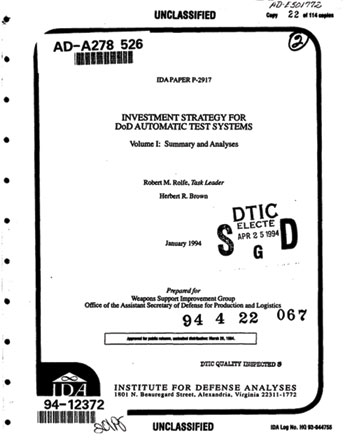
Following congressional direction in 1992 and 1993, the Office of the Secretary of Defense (OSD) issued a policy change on ATS acquisitions, stating that DoD components must satisfy all acquisition needs for ATE hardware and software by using “designated ATS families.”1 Faced with a growing number of aging test systems, the OSD wanted to mitigate the impact of ATE obsolescence in future systems through a process of standardization and consolidation.
The memorandum designated the Army’s Integrated Family of Test Equipment (IFTE) and the Navy’s Consolidated Automated Support System (CASS) as the initial DoD ATS families, and stipulated that commercial off-the-shelf (COTS) testers and components would be permitted for use at Depot and Factory levels of maintenance. The U.S. Navy was selected as the Executive Agent for developing the “strategic roadmaps to achieve commonality amongst DoD ATS and to ensure conformity with DoD mandates.”2
In 1994, the DoD released its new policy calling for standardization on DoD ATS families and multiple weapon system support for new ATS acquisitions. Hoping to benefit from an economy of scale, this change was intended to minimize the number of unique ATS in an effort to reduce non-recurring ATS development and maintenance costs, while increasing supportability and equipment reliability.3
The DoD ATS Executive Directorate4 established four main goals including:
- Reduce the total cost of ownership by stopping the proliferation of unique test systems through standardizing on designated ATS families or acquiring “validated” COTS test systems. A cost and benefit analysis over the complete system life cycle would be required for future ATS selections.
- Introduce interoperability – The closed architectures of most legacy DoD Automatic Test Systems prohibited interoperability, yet the flexibility required by the war-fighter in modern conflict scenarios requires that the Services move toward interoperability among ATS including functions needed within a given Service and across Services.
- Reduce the logistics footprint to allow rapid deployment and support of weapon systems in the field.
- Reduce the time required to test, repair and return a failed system and component to service by improving the quality of diagnostics and fault isolation. This objective would help reduce the need to stockpile excessive spare parts.
A five-step process toward achieving these objectives was developed. The new guidelines included: 1.) The use of designated DoD ATS families to reduce total ownership costs; 2.) Implementation of a DoD ATS Technical Architecture Framework to serve as the target to which all DoD ATS would evolve; 3.) Joint development of test technologies between Services to leverage each other’s investments in ATS-related R&D; 4.) Maintaining periodic system-level demonstrations as a “snapshot in time” of the available technologies; and 5.) Each individual Service would execute their own implementations of the ATS technologies and the ATS Framework through technology insertions or acquisition of new systems.
Navy’s CASS
As directed, the Navy standardized on CASS to support electronic systems at Intermediate Maintenance Activities (IMA) both ashore and afloat in addition to Navy repair depots by 1994. CASS’s modular design consisted of six different configurations including:
- Hybrid – provides the core test capability for general purpose electronics, computers, instruments and flight controls.
- Radio Frequency (RF) – provides ECM, ECCM, EW Support Measures, Fire Control Radar, Navigation Radar, Tracking Radar, Surveillance Radar and Radar Altimeter support capability to Hybrid testers.
- High Power – provides RF station capability plus the capability to test high power RADAR systems such as the APG-65 and APG-73.
- Communications/Navigation/Interrogation (CNI) – provides RF station capability plus communication, navigation, interrogation, and spread spectrum system support capability.
- Electro-Optic (EO) – provides Hybrid station test capability plus support capability for Forward Looking Infrared, Lasers/Designators, Laser Range Finders and Visual Systems.
- Reconfigurable Transportable CASS (RTCASS) – provides a man-portable CASS configuration using COTS hardware and software to meet USMC V-22 and H-1 support requirements as well as to replace mainframe CASS stations at USMC fixed wing aircraft (EA-6B, F/A-18 and AV-8B) support sites.
Army’s IFTE
The Army’s approach called for developing several different testers known as the IFTE. The IFTE could support automated testing of Army ground vehicle, aviation and missile systems both in theater and out. The IFTE family focused on providing a vertically integrated ATS capability for sustainment and field levels of maintenance. Army planners needed to shift the capabilities of its existing ATS family toward one that was more highly mobile, rapidly deployable and general purposed, while also offering reconfigurable testing, screening and repair capability for its weapon systems and communications.5
These capabilities would facilitate the diagnosis and repair of critical components at the unit and sustainment levels of maintenance, supporting future and legacy combat platforms. The new strategy would allow the individual soldier to repair a faulty component with a Line Replaceable Unit (LRU) and return it for issue as needed. Previously, defective equipment was retrograded to a depot or OEM for test and repair.
Originally deployed in the early 1980s, the Army’s Direct Support Electrical System Test Set (DSESTS) only supported Abrams and Bradley equipment and was the system-specific ATS that the DoD wanted to migrate away from. In contrast, the IFTE Base Shop Test Facility Version 3 (BSTF(V)3) supported a variety of ground combat systems and limited aviation components. Since its original deployment in the early 1990s, over 150 (V)3 systems have been produced to support various weapons systems including MLRS, Avenger, Paladin, Kiowa Warrior, and ground-based sensors.6
The IFTE includes two main categories of ATS, the Off-Platform ATS (OPATS) and At-Platform ATS (APATS). The OPATS consists of the Base Shop Test Station (BSTS) and Base Shop Test Facility (BSTF), the Electronic Repair Shelter (ERS) and the Commercial Equivalent Equipment (CEE). The APATS includes the Maintenance Support Device (MSD). Current and future Army’s ATS programs aim to support its Modular Force structure and have evolved significantly over time.
The IFTE BSTF(V)5 with an added Electro-Optics Test Facility (EOTF) is the current field operational Army test station. It provides support to the Kiowa OH-58D Mast Mounted Sights and Apache AH-64D electro-optical LRUs at field Aviation Intermediate Maintenance (AVIM) levels. EOTS tests laser transmitters, receivers, spot trackers, forward-looking infrared systems (FLIR) and TVs. The EO system uses the Navy-developed Electro-Optical Subsystem (EOSS+) to conform to all DoD standardization objectives. The IFTE BSTF(V)6, also known as the Next Generation ATS (NGATS), will be the newest ATS in the Army’s IFTE product line.
The DoD ATS Family Expands
The Joint Services Electronic Combat System Tester (JSECST) represents a joint USAF-USN procurement program featuring a flight line electronic warfare systems tester for end-to-end functional testing capability of electronic combat systems installed in or on operational aircraft. This tester was not considered a major ATS acquisition and could be approved by the ATS manager in any of the four services since it was built to work with multiple Navy, USAF, Army and Marine platforms.
The JSECST capabilities include threat representative simulations and technique/signal response analysis. Since completion of production in March 2005, JSECST hardware and software is being sustained by WR-ALC to support Air Force, Navy, Army and Marine users. The total DoD acquisition quantity includes 121 Core Test Sets for Air Force and 125 for Navy as well as JSECST core test sets for USMC and Army.
The Marines mostly used the Navy’s RT-CASS units while developing their own Third Echelon Test System (TETS) for depot/field repair and diagnostic test support starting in the mid-1990s. TETS would provide the USMC with a capability to test, diagnose and screen a wide variety of electronic and electro-mechanical units at the ground forces organic maintenance levels. TETS would also function as stand-alone General Purpose Electronic Test Equipment (GPETE) to support testing of analog, hybrid and digital technologies with basic RF and EO configurations. Being highly mobile, TETS needed to be man-portable and operable from vehicle power.
In 1998, the DoD ATS Executive Agent approved the USMC’s Marine Corps Automatic Test Systems (MCATES) as a new DoD ATS Family with the Third Echelon Test Set (TETS), AN/USM-657, being the basic family member within MCATES. Recently, the TETS capabilities have been expanded with the VXI-based virtual instrument portable equipment repair/test or VIPER/T system.
USAF Embraces VDATS
Back in 2003, nearly ten years after the initial call to standardize ATS within the DoD, the US General Accounting Office (GAO) investigating the adoption of the common ATS mandate found a lack of conformity across all the armed services and an unwillingness to comply, especially within the Air Force. The GAO report found a general lack of guidance, support and funding for the mandate. The report also discovered that the Air Force, with its preference to procure and manage unique ATS as part of any parent weapon system, lacked a service-level ATS standardization policy.
With little substantive data supporting the projected benefits, standardization received little support within the Air Force. While the one tester per weapon approach was wasteful with its redundant procurement and development efforts, procuring common ATS for independent programs was believed to significantly complicate schedules and requirements. As a result, many of the test systems procured during the 1980s remained in service through the mid-2000s. By 2005, the same year that the DoD released a new ATS master plan for reducing proliferation, life-cycle operations and support costs, many of the Air Force’s ATS were facing severe aging and obsolescence problems.
Lack of replacements for obsolete instruments resulted in shortages of spare parts and threatened ATS downtimes. In addition, non-portable Test Program Sets (TPS) impeded legacy system upgrades. The situation was impacting the readiness of military aircraft and weapon systems. Back in 2000, Dempsey Ventress, an engineer support element chief with the 402nd Electronics Maintenance Support Squadron at Warner Robins Air Force Base, devised the concept of a common-core tester. With help from the electronics and software community, Ventress refined his ideas and received funding for $57 million from the Air Force Material Command in 2005.
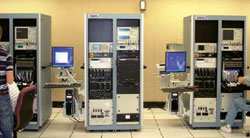
Fig. 1 Multiple VDATS with RF Auxiliary Unit at Warner Robins Air Force Base.
At the time, Robins Air Force base required 268 legacy testers to support its many weapons systems and aircraft components at the center. The average age of these testers was over 26 years. According to a report by Ventress, there were over 150 different configurations and 100 one-of-a-kind testers. The legacy testers were difficult and expensive to maintain, repair parts were often unavailable, test programs were not transportable and the number of (aging) technicians with a working knowledge of ATS operations was diminishing due to attrition.
In 2006, the new common-core architecture conceived by Ventress and his collaborators officially became known as the Versatile Depot Automatic Test Station (VDATS) – a part of the ATE transformation project. Construction began in January of 2007 and by August, eight VDATS DAs and two RF auxiliary units were completed. In late 2007, VDATS became a member of both the Air Force and DoD family of testers, meaning that any future weapons system development had to first consider utilizing VDATS as the test system (see Figure 1).
The VDATS concept called for a Digital-Analog (DA) tester with a “common-core” set of state-of-the-art instrumentation. The DA tester was designed to provide capability to test 80 percent of the existing depot workload. Shortly after inception, additional RF test capabilities were added to address about 95 percent of the requirements of legacy testers in the Robins Air Logistics Center repair depot inventory.
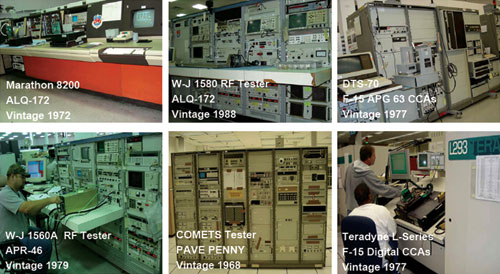
Figure 2 Legacy testers replaced by VDATS.
In its first year of production, VDATS replaced existing test systems such as COMETS, DTS-70, AN/ALM-258, MMTS, WJ1560A/1580 (RF tester) and IFTE (the Army’s family of testers). These ATS had been supporting a host of systems including: the avionics in the F-15 all-weather tactical fighter; the AN/ALQ-172 Countermeasures System (CMS) radar warning system; the AN/APR-46A receiving system, a rapid scanning, highly sensitive heterodyne receiver used to detect threats and provide warning of DF radar signals at very long range; and the Lockheed Martin AN/AAS-35(V) Pave Penny laser spot tracker carried by USAF attack aircraft and fighter-bombers (see Figure 2). By 2008, Warner Robins was targeting to build 40 DAs and 18 RF auxiliary units to replace 80 existing testers by 2010 and eliminating 26 different testers this year.
Extending ATS Life Cycle
The DoD is currently in the second phase of system rationalization and ATS consolidation. The first phase allowed the costly proliferation of several hundred different test systems. The next phase, which began in 1994, focused on developing solutions based on major ATS families (VDATS, CASS, TETS, ITFE). Developments over the past 18 years have allowed these systems to cover the bulk of their predecessors testing capabilities with a more flexible solution, making them less vulnerable to equipment obsolescence.
The current generation of ATS families will eventually require either replacement or modernization. The Next Generation Automatic Test Systems (NxTest) Integrated Product Team (IPT) was chartered by the DoD to jointly develop the technologies necessary for implementation in the next generation of ATS. Ultimately, the goal is to have a unified test system across services. Conceived in the late 1990s, this third phase of consolidation is still some years away from being fully realized, but is bearing fruit today.
The IPT group proposed two main thrusts to drive the NxTest activities. First, define the elements in a test system with the most impact on costs and interoperability. The second focus was to develop a generic test system architecture. The open system architecture was needed to support new test needs and permit flexible updates and new technology while minimizing the impact on existing ATS components. This architecture could serve a broad range of commercial applications, helping to garner test industry support. To bring some common terminology between industry participants, the IPT proposed a new architecture based on the concept of “synthetic instrumentation.”
The DoD’s Synthetic Instrument Working Group (SIWG) originally defined the SI term in 2004 as elemental hardware and software components with standardized interfaces and measurement software, which yield a smaller footprint and greater flexibility. The SIWG defined synthetic systems as: “A reconfigurable system that links a series of elemental hardware and software components, with standardized interfaces, to generate signals or make measurements using numeric processing techniques.”7
Once the standard was defined, the group disbanded, and the remaining work moved to IEEE’s Automatic Test Markup Language (ATML) Group and the IVI Foundation Synthetic Instrument Groups. IVI Class Drivers provide standardized API functions for test assets and by themselves provide a certain measure of interchangeability. The IVI class driver model fits naturally with the SI hardware model of finer measurement granularity.
The stimulus or measurement capabilities of traditional RF test instruments could be achieved through a combination of software algorithms and hardware modules based on core instrumentation circuit building blocks. The concept of SI and IVI found its roots in the well-accepted technologies and techniques often found in software-defined radios, mobile phones and other communications systems.
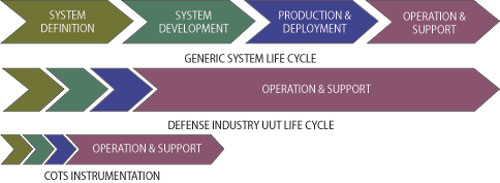
Figure 3 Defense industry devices feature life cycles significantly longer than commercial-off-the-shelf (COTS) components.
When NxTest was first conceived, modularity was seen as a way to overcome obsolescence, the major downside of COTS hardware. Supporting platforms that will be operational for 25 years and more leads to a significant mismatch between the lifecycles of units under test (UUT) and the lifespan of the ATE (see Figure 3). Because test equipment technology evolves at a rapid pace, individual components of ATE often become obsolete while the overall test system is still in high demand.
An ATS architecture that incorporates a broadly supported modular instrumentation hardware platform greatly minimizes the instrument obsolescence problem; therefore, it is not surprising that VXI and PXI are prominent in the newer AT. The modular form factor increases the possibility of having multiple replacement options from second source suppliers while minimizing the amount of hardware to be replaced since common resources such as computing platforms, power supplies, cooling components and other support infrastructure elements are not integral parts of each instrument.
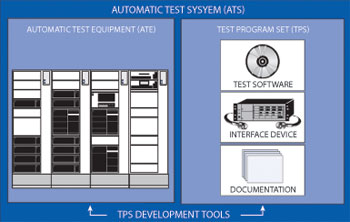
Fig. 4 Typical ATS showing relationship with TPS development tools, documentation and supporting software.
Replacing instrumentation hardware is just one of the challenges in maintaining ATS support over a long time period. It is also necessary for replacement hardware to perform the existing verified and accepted tests. Existing tests rely on both the instrumentation and the Test Program Set (TPS), which may be unique to each UUT (see Figure 4). Any given TPS, which includes development and integration, support documentation, software and interface components, represents a significant financial investment. For this reason, support organizations prefer to leverage an existing TPS.
Since redevelopment of a TPS is costly, ATS systems designed with an abstraction layer between the TPS and the test station hardware assets offer a significant advantage in reducing the expense of obsolescence. A hardware abstraction layer, sometimes referred to as a software wrapper, makes it possible to develop tests with generic commands for controlling test assets instead of using vendor unique syntax. Separating the commanding functionality from unique syntax protects the TPS investment during an upgrade.
Realizing Next Gen ATS
NGATS is designated as the Army’s implementation of the multi-service Agile Rapid Global Combat Support System (ARGCS), a FY04 DoD Advance Concept Technology Demonstration (ACTD) project to develop a single tester that will incorporate all the test technologies currently maturing to achieve rapidly fieldable, interoperable support capability. Designated as the “Army Standard” ATS, NGATS will be capable of assuming all current and projected ATS missions. The ARGCS integrator contract was awarded to Northrop Grumman Corp. in September 2004.
While meeting all maintenance levels of fault isolation, diagnosis, and repair needs of current and future systems, the NGATS design will allow the ATS to be linked to Automated Information Systems/Networks in order to communicate critical maintenance data. The development schedule calls for backward compatibility, allowing the NGATS to replace DSESTS in FY10, IFTE BSTF(V)3 in FY13 and IFTE BSTF(V)5 in FY15. This evolutionary strategy will yield one common Army ATS, which will be the DoD standard, joint service capable and will be networked within the Army logistics system.
Benefits of NGATS include:
- VME- and VXI-based instrumentation for flexibility and easy modification for future technologies.
- Reconfigurable, modular, single solution.
- Open architecture, Standard COTS instruments, Plug-n-play software.
- Uses the same TPS hardware/software in factory, field or depot.
- Enables isolating LRU faults and screen shop replacement units (SRU) at forward areas for quick LRU turnaround and to minimize the spares pipeline.
- Reconfigurable to adapt to new weapons system technology.
- Reduces maintenance, support training and logistics costs.
Private contractors and ATE vendors will be responsible for integrating all identified TPSs and any TPS software processes and related tools required for DSESTS TPS migration to NGATS. The new test station must be backward compatible with all DSESTS, BSTF(V)3 and BSTF(V)5 station capabilities and interfaces and shall retain all legacy characteristics in order to maintain legacy DSESTS and IFTE TPS performance while taking advantage of the full range of modern test station capabilities.
In March of last year, an Army solicitation (W15QKN-11-X-E007) was posted online stating that the Government was in the process of defining its acquisition strategy to produce and operationally field NGATS test stations to the warfighter, replacing existing mainframe ATE stations starting no later than FY13. A draft RFP was expected for issuance 1st QFY12 with a formal RFP expected to follow during 2nd QFY12. The contract type will be Firm Fixed Priced based on full and open competition. The anticipated production quantities will be 150 NGATS. The production rate is anticipated to be 40 units per year from FY13 thru FY17.8
Just a month prior, Northrop Grumman and DRS Technologies announced that they had been awarded a $50 million contract for low rate initial production (LRIP) replacement for the current ITFE and other Army off-platform testers. The system would initially test the electronics and weapon systems in heavy combat vehicles such as the Abrams/Bradley and will be used for Stryker depot efforts starting in 2012.
Under the terms of a LRIP contract, the Northrop Grumman-led team would deliver a total of eight NGATS plus spares in 2012. In follow-on phases, NGATS will be capable of supporting the Common Remotely Operated Weapon Station, Kiowa Warrior helicopters and missile launchers, as well as a variety of other existing and future weapon systems. DRS Technologies and Northrop Grumman had begun partnering on NGATS over a decade ago, with each company bringing over 25 years of experience developing the DSESTS and ITFE, respectively. This past month, the companies announced the delivery of the first NGATS under the LRIP contract.9
Navy Updates its ATS
Legacy mainframe CASS systems are approaching the end of their useful service life. The Navy will modernize its ATS needs with the eCASS – the CASS Modernization Program, replacing all five current CASS configurations (Hybrid, RF, CNI, HP and EO). The projected inventory calls for 382 eCASS stations to eventually replace 553 mainframe CASS stations and 160 RTCASS stations. The initial eCASS development contract was awarded in March 2010 to Lockheed Martin Global Training and Logistics with initial operations scheduled to start around 2016 and full operations slated for 2018.10
The RFP to replace the legacy CASS mainframe calls for the re-utilization of approximately 750 existing CASS Test Program Sets while maintaining or improving the fidelity of test, run-times and performance. Lockheed Martin will be responsible for any TPS software processes and related tools required for CASS TPS migration to eCASS. The new test station shall have a compatibility mode that will emulate existing CASS station characteristics in order to maintain legacy CASS TPS performance and will also have an eCASS mode that permits taking advantage of the full range of advanced eCASS station capabilities. The program will also develop a set of eCASS TPS development suites, which includes a “CASS to eCASS” TPS conversion toolset.
The Impact of Future DoD Budgets
While the White House has asked for $78 billon in DoD savings over the next five years, the DoD itself has proposed savings initiatives targeting a total of $154 billon ($34 billion AF, $35 billon Navy, Army $29 billon) over the same period in the interest of re-investing the difference ($70 billon) on much needed modernization, including new acquisitions (long range strike family, tankers, T-39 replacement, light attack aerial recon) as well as ongoing procurement (MQ-9 Reaper, Global Hawks, C-130 variants, F-35, F-22, etc.).
A major concern in the overall budget is the amount of duplicate infrastructure among the Services including weapon support (ATS) capabilities.
As of March 2011, 50 VDATS have been fielded along with over 135 TPSs developed with over 275 more TPSs planned. Near-term ATE opportunities/contact opportunities called for by the Air Force include the B-1B ARTS REW replacement (23 stations, 32 TPS), Cruise Missile tester modifications (potential FY2012 opportunity), A-10 Combined Armament Tester (three-phase procurement – proof of concept, competitive production contract, follow-on TPS demo, production FY12-FY14), VDATS Performance Based Acquisition (to include test stations and ancillary equipment for manufacture/production and parts availability) and the CASS/eCASS/VDATS hybrid interface.11
This interface is currently in the analysis phase. The study is strictly focused on these families, looking to identify and produce a consolidated list of their differences, provide tester capability focus, consolidate this information into a design solution and determine if a two-way interface or TPS portability avenue is best. The study, which may result in a contract to undertake the effort, will also look into the potential for a future interface to the Army NGATS.
With the initial operations for eCASS slated for 2016 and a minimum service life of at least 10 years for an ATS platform, the actual merging of an inter-service ATS (among VDATS/eCASS/NGATS) called for in the NxTest initiative should be no sooner than 2026. Expected defense budget cuts will put greater pressure on the DoD to conserve existing test resources into the foreseeable future.
Conclusion
Over an extensive period of time, the DoD and individual branches of the Armed Services have done a remarkable job of recognizing and planning for the challenges of maintaining ATS for advanced weapon systems. In doing so, they have been able to address the need for long-term support in the face of constant ATE evolution and obsolescence. By anticipating and leveraging the advances in RF test equipment, digital hardware (i.e. FPGAs, high-speed DACs/ADCs, etc.) and software, combined with the concept of synthetic instruments and a strategic, modular approach to ATS architecture, the DoD has not only addressed its vast testing needs for today and the foreseeable future, defense planners have helped propel the state-of-the-art in test instrument technology for all.
References
- www.dodig.mil/audit/reports/fy95/95-024.pdf.
- www.dtic.mil/dtic/tr/fulltext/u2/a434412.pdf.
- www.dau.mil/pubscats/PubsCats/AR%20Journal/Johnson%205-06.pdf.
- www.acq.osd.mil/ats/.
- www.acq.osd.mil/ats/2009_DoD_ATS_Master_Plan.pdf.
- www.es.northropgrumman.com/solutions/bstf/assets/IFTE.pdf
- SIWG Meeting #2 Statements and Definitions, December 11, 2004.
- https://www.fbo.gov/notices/c0ccbb0afe718a139e714e37d4ba9dab.
- www.army-technology.com/news/industry_news_archive.html.
- www.naval-technology.com/news/industry_news_archive.html
- Michael Frey, USAF Liaison Report, March 15, 2011.
